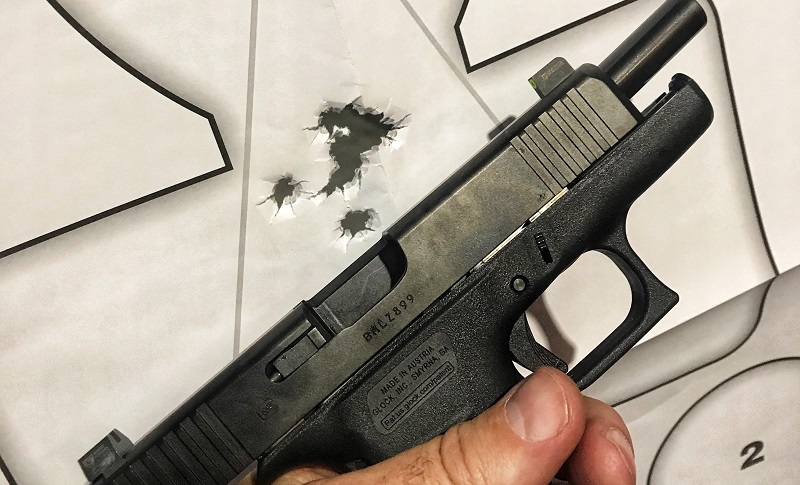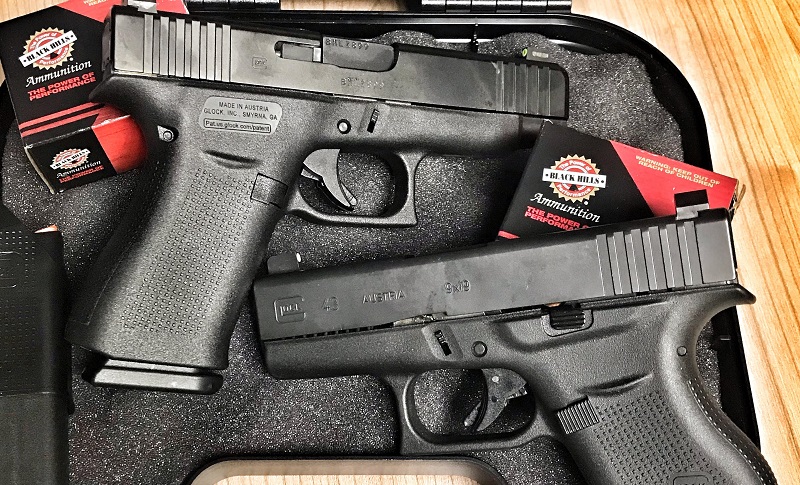“The sights are off on this thing. If I had better sights my gun would be more accurate. Crap!” I have heard this statement or some version of it for decades now. Is there any truth to such an assertion? Yes and no.
Let’s dig into the science of handgun sights a little bit. Maybe we can learn something together.
Sights on Handguns – What You Need to Know.

There are so many styles and designs of handgun sights on the market that this situation can be truly confusing to the new or neophyte gun owner. Which set of sights is truly the best? Which of the two sights is the most important; front or rear? To the skilled and experienced marksman, the aforementioned might seem a redundancy. However, each day there are brand new gun owners. There are also existing gun owners with little to no actual training. How can we best explain the purpose of sights to these folks?
The most basic explanation for sights on a firearms is this; sights align the shooters eye with the bore of the gun. Sights do NOT alter the flight of the bullet, what sights do is allow the shooters eye to see exactly where the bullet will impact. There is a strange misconception that adjusting the sights on a handgun somehow alters the flight path of the bullet. That is simply not true.
Think about it like this. If you put your handgun in a shooting vice, like the Ransom Rest, the bullets are going to impact wherever the muzzle happens to index. Seated in the shooting vice, the bullet impact will be consistent, regardless of what you might do to the sights.
Front Sight or Rear Sight?
When we are discussing handguns, and rifles too but let’s keep it simple, which sight is most important; front or rear? In order to strike the target with a bullet, the muzzle of the gun must align with the target or index on it. The shooter cannot see the muzzle, as it is out front, so someone invented a way to know that your muzzle was indexed on target. They put a bump of metal right directly above the muzzle to aid the shooter. That bump of metal became more advanced over the years and was replaced by brass, even gold in some cases, colored polymer or brightly colored paint.
The greatest advancement in front sight design to date is the addition of a vial of Tritium that produced its own light via radiation. A vial of radioactive Tritium surrounded by brightly colored polymer is the pinnacle of front sights currently in existence.
When utilizing a front/rear sight combination, the shooter has three objects in their field of vision; the rear sight, the front sight, and the target. The human eye cannot focus at three distances simultaneously, you have to pick one. Going back to the requirement to index the muzzle on the target in order to hit it with a bullet, the front sight is the most important and is the one on which your focus should be placed.
Naturally, the rear sight and target will still be in your field of view, but the front sight should be clear and in focus for precision aiming. If that is the case, why do we spend so much time worrying about the rear sight configuration or design?
The Science of Sight – Are You Doing it Wrong?

When I took my first photography class, nearly 30 years ago, the instructor described photography as “painting with light”. All the information taken in by the human eye is based upon light or a lack thereof. We perceive images and color because of the rods and cones in our eyes. The photo-receptors in our eyes are composed of rods that are used during low light and cones which help us see color and high spatial acuity.
As we lose visible, white light, our vision changes from color vision to shades of black, white, and gray. Also, various colors diminish faster than others as the light fades. The last color spectrum you lose is the bright yellow/green or “safety green” color. That is why road crews changed from orange vests to the safety green vests years ago. The red color spectrum disappears before orange, and orange disappears before yellow as visible light diminishes.
When natural or artificial light is lost, black is always black and white is always white, all colors become a shade of gray. Therefore, a colored front sight that is red or orange or even blue or green will become gray when the sun goes down. A white sight is still white.
Our vision naturally moves to colors that reflect light. White and safety green reflect light very well and our eyes naturally gravitate towards them. The brightest or technically most light reflecting object will stand out to our eyes.
If your rear sights have white paint or twin vials of glowing green Tritium and your front sight has half the amount of white paint or a single vial of Tritium, your eyes move to the rear sight first. Remember, your eyes focus on the brightest object in your field of vision.
What are the Best Handgun Sights?
Considering all that we have discussed thus far, it would seem that if we hope to mate the human eye with our mechanical bullet launching device, the best handgun sights will have bright, easy to see front sights and less bright, more subdued rear sights.
Tritium produces light, therefore it appears visible even in absolute darkness. As for front sight colors, white is always white, even when the world around us becomes black and white and gray. The bright yellow/green or “safety green” is the color spectrum that is lost last when our eyes lose visible light.
Therefore, from a human physiology and scientific standpoint, not personal feelings or desires, the most effective and useful handgun sights would include a dark/subdued rear sight paired with a front sight that is either white or “safety green”. A more efficient front sight would include the aforementioned colors surrounding a self-lighting Tritium vial. Top of the line, Accur8 fighting sights can be had from Night Fision.
About the Author.
Paul G. Markel became a U.S. Marine in 1987 and served his nation during times of war and peace. A law enforcement veteran, Paul was a police officer for seventeen years before becoming a full-time Small Arms and Tactics Instructor. During the late unpleasantness, Mr. Markel has trained thousands of U.S. Military troops prior to their deployment to combat zones. He is and will remain a dedicated Student of the Gun.
